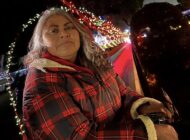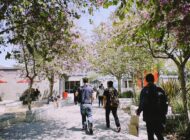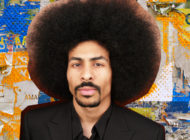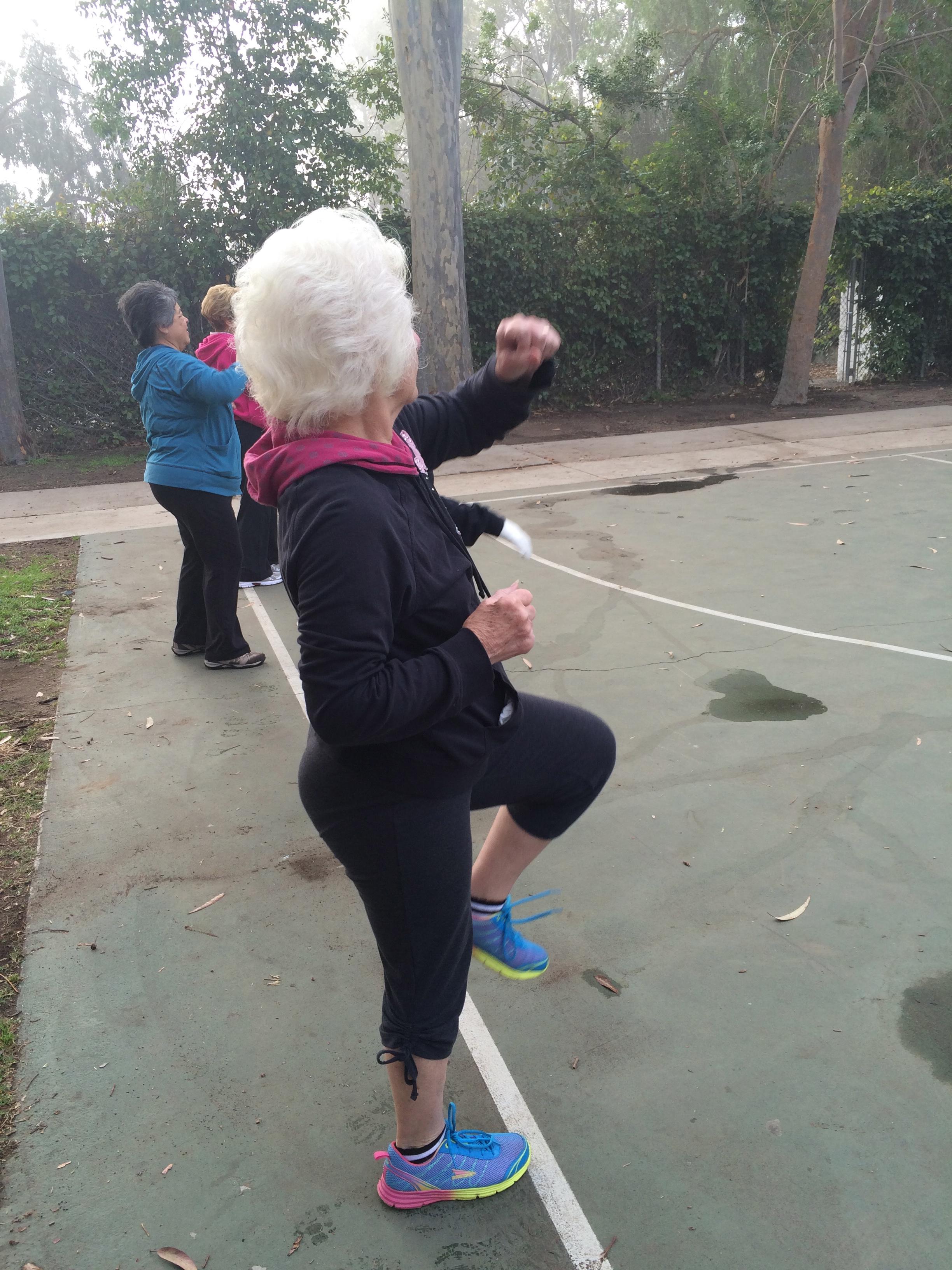“Without the scholarship, I wouldn’t be able to afford being a client at the Brown Center.”
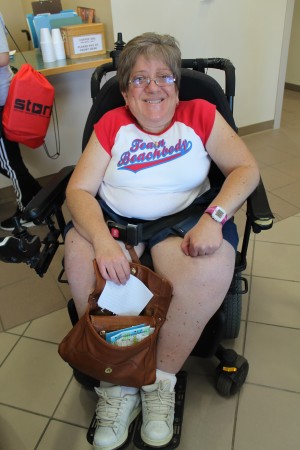
Mary Bella, 48 has received a scholarship for the last seven year to exercise at a center adapted to suit the needs of people who are physically disabled. Photo by Pilar de Haro/El Nuevo Sol
By PILAR DE HARO
EL NUEVO SOL
“The doctor gave me 24 hours to live when I was born, and told my family that if I did live, I would be in a vegetative state,” said health coach and Panorama City resident, Mary Bella.
Born with the genetic birth defect of Spina Bifida that left her paralyzed from the waist down, Mary Bella is one out of approximately 56.7 million people in the United States who have a disability.
Raised in the valley of Arleta, Bella is the youngest of three. She grew up wearing braces on her legs as part of her physical therapy.
“The doctors gave me a blow when they said I was getting too big and would take me out of the braces,” said Bella. “So, I sat in my chair doing nothing but getting heavier and more depressed. I found out about a place for the disabled to go and exercise and… I trusted that god would provide for me financially and he has not broken any of his promises.”
About four years ago, turning the wheels of her chair, Bella entered her local 24 Hour Fitness gym to find that most of the equipment there wasn’t adapted to suit the needs of wheelchair users like herself. She was only able to use three machines.
Bella can attest to the lack of resources and affordability in places like the local gym for others who are similarly physically disabled like her. At the time, her insurance was luckily able to cover the monthly fee to access a local gym.
Physically disabled people who face similar obstacles like Bella has, have a higher chance of confronting health issues.
According to a 2010 study by Obesity Reviews, obesity has a long term impact on people with physical disabilities because of complications of diabetes and the increased risk it poses for cardiovascular disease.
The lack of affordable exercise resources in the form of facilities and equipment for physically disabled people are part of the problem.
A 2005 study by the American Journal for Public Health evaluated 19 nonprofit-urban facilities and 16 privately owned suburban health clubs and found them to have low to moderate levels of accessibility for people with disabilities. Issues included a lack of adaptive exercise equipment, power-assisted doors, and a reluctance by staff members to help physically disabled clients because of added costs.
Dr. Rory A. Cooper, Professor of Rehabilitation Science and Technology at the University of Pittsburgh, explains that people who do not have impairments can easily exercise by running, walking at no cost or at a modest cost through a sports or exercise club; however, there are fewer options for people with disabilities because of specialized equipment that is often too costly to attain.
“Organizations and companies are often non-compliant with the Americans with Disabilities Act. There needs to more convenient and affordable integrated outlets for sports and recreation,” said Cooper.
The Americans with Disability Act (ADA) of 1990 prohibits discrimination of people with disabilities in public places including commercial facilities where wheelchair users should by law be accommodated by the ADA standards. But the same study by the American Journal for Public Health found that a number of exercise facilities weren’t compliant with the ADA guidelines pertaining to the facilities’ equipment, information, policies, and professional staff.
At one 24 Hour Fitness in Northridge, gym manager Beau Peregino, 34, says there is an estimated 180 pieces of exercise equipment including the standard designated shoulder press, curl crunch machines and cardiovascular equipment. At the gym, located off of Nordhoff Way, only three pieces of rowing equipment used for the arms were confirmed accessible to wheelchair users.
At Cal State Northridge, the roughly 100,000-square-foot Student Recreation Center holds a total of six machines located at the total training zone that are adapted to the needs of wheelchair users. The large, newly developed gym features an indoor jogging track, a rock climbing wall and over 190 machines but only 3 percent of the machines are adapted for disabled people. The SRC has a lift designed to help wheelchair users inside the pool, but has no specific physical fitness programs to serve this clientele, according to SRC Building Manager Douglas Marks, 21.
Alternative exercise facilities in Northridge such as The Brown Center, located at Cal State Northridge or The Center of Restoration Exercise (C.O.R.E.) located off of Reseda Boulevard, cater specifically to people with different disabilities.
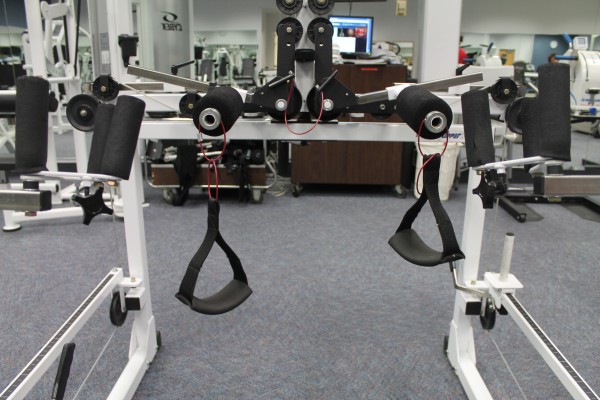
The gym inside the Brown Center has adapted exercise equipment for wheelchair users.
Photo by Pilar de Haro/El Nuevo Sol
The Brown Center focuses on aquatic and land-based exercise programs. Depending on the program, the evaluation fee begins at $75 or $125. The actual cost of the 13-week aquatic-based program is $317 and the land-based program is $287.
Osvaldo Larita, 24, CSUN Alum and 3-year worker at the Brown Center, says that many gyms are unwilling to offer extra services for physically disabled clients because of perceived additional costs.
“Some gyms don’t even allow people who are disabled to enter because of safety issues,” said Larita, 24. “Gyms would have to pay more for their insurance to accommodate disabled people. Also, commercial gyms are not disabled friendly because most gyms don’t have trained people with the knowledge to work this group of people.”
C.O.R.E., a community based rehabilitation exercise center works with adaptive equipment. They specialize each individuals need at a general cost of $59 a month, according to the website.
Unless you are being economically assisted through a scholarship or the government, there are few low-cost fitness options for people who are physically disabled.
Bella has been a recipient of the Brown Center’s Britten annual scholarship for more than 7 years.
“Without the scholarship, I wouldn’t be able to afford being a client at the Brown Center,” said Bella, who participates in the cardiovascular and boxing exercises. Upon losing 25 pounds the program has helped improve the state of her health.
Outliving her doctor’s expectations, Bella is 48 years old today and a fitness and health coach
through Team BeachBody, a fitness program designed to helps others embrace a healthy lifestyle with exercise and meal plans.
“I help people who want to lose weight, lower their blood sugar or just start their own fitness journey,” said Bella.
Tags: 24 Hour Fitness California State University Northridge CSUN diabetes exercise fitness gyms health physically disabled scholarships The Brown Center US diabetes wheelchair users







